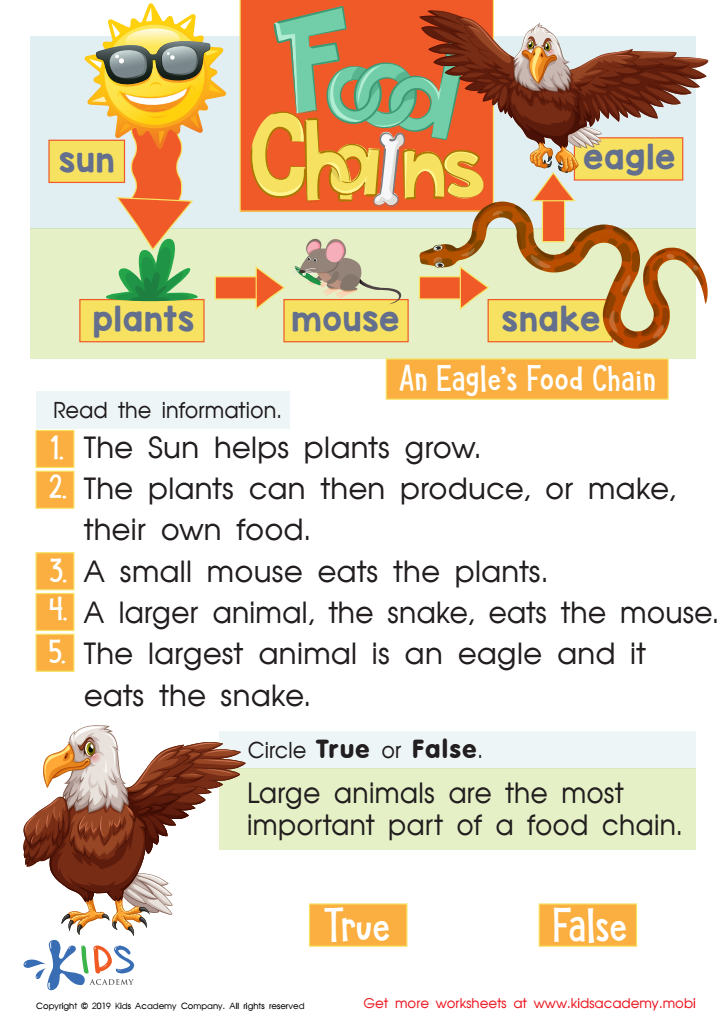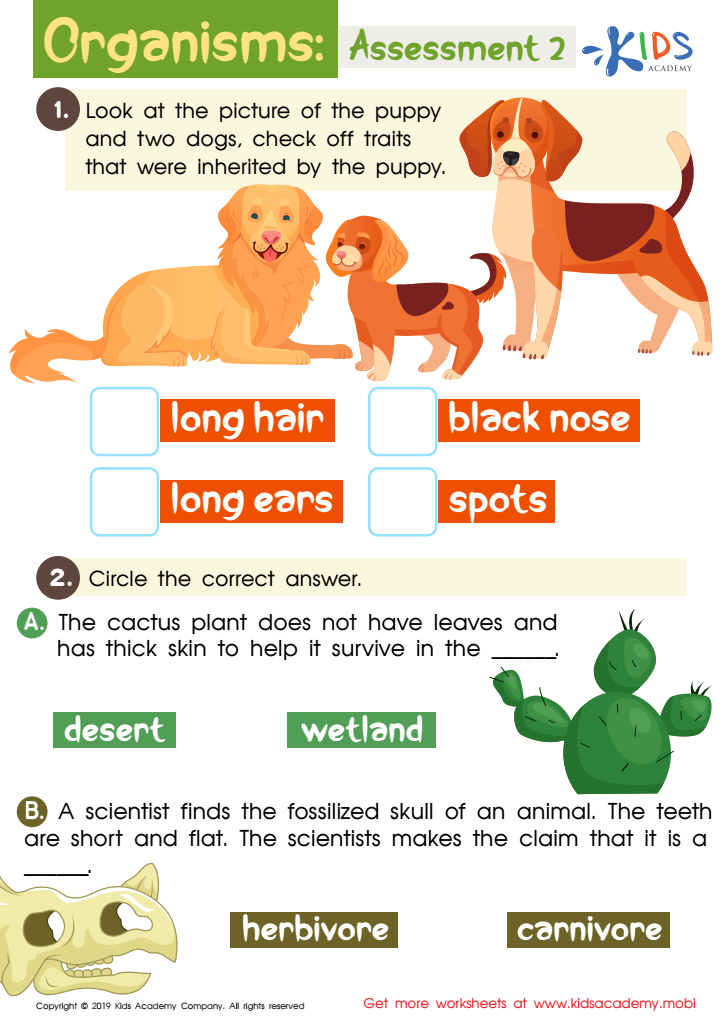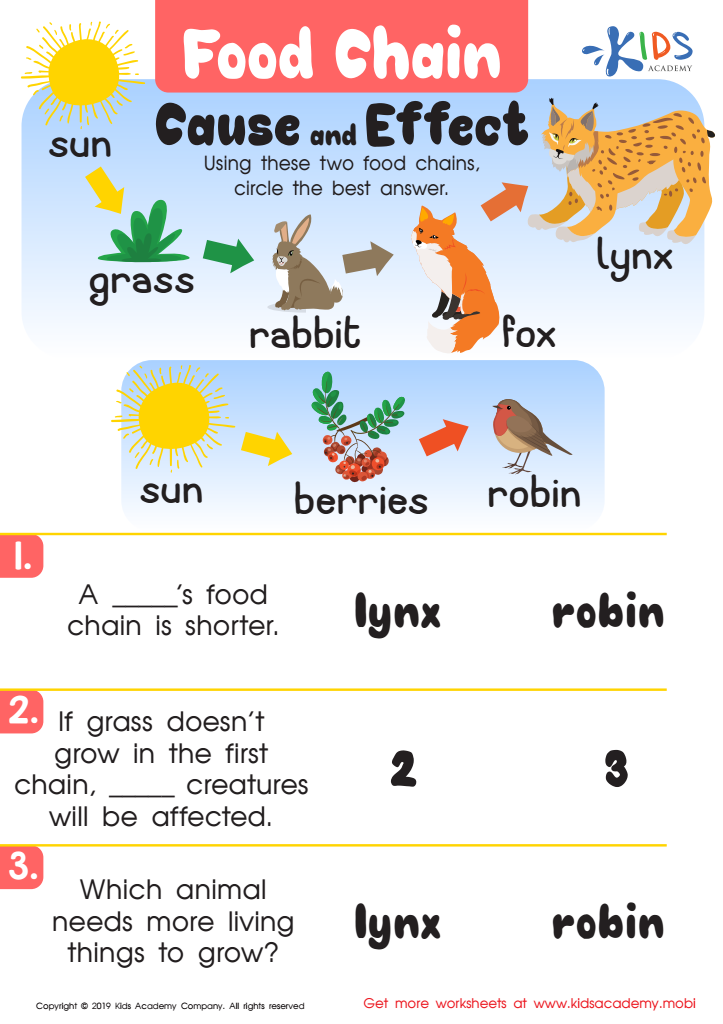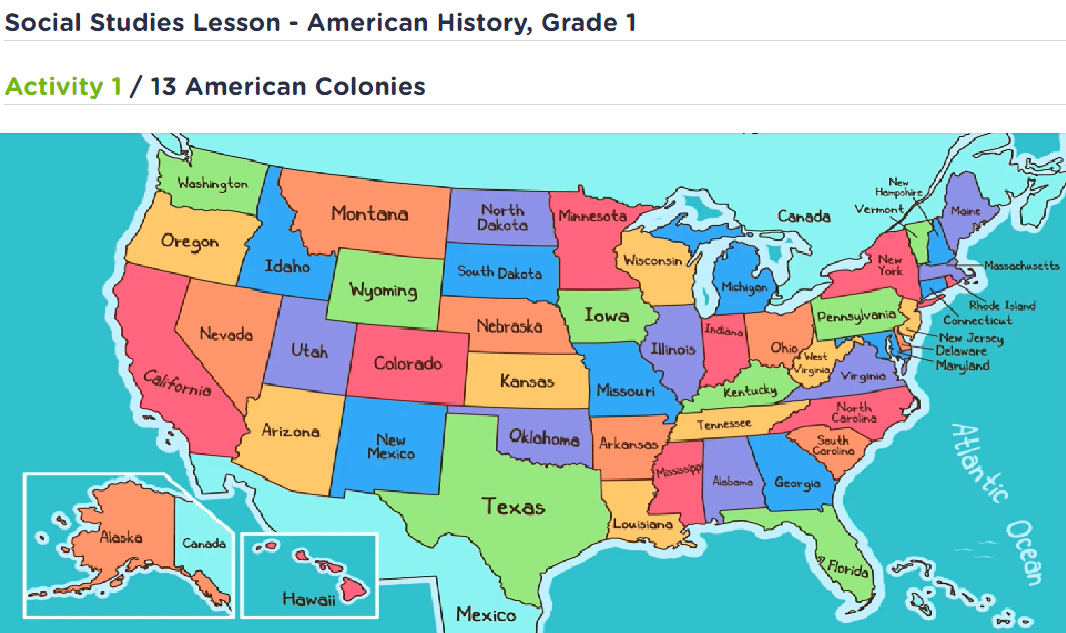Understanding food chains Worksheets for Kids
3 filtered results
-
From - To


Food Chains Worksheet


Organisms: Assessment 2 Worksheet


Food Chain Cause Worksheet
Question/Answer
What does the Understanding food chains skill mean when it comes to Grade 3 Reading Non-Fiction learning?
The "Understanding food chains" skill in Grade 3 Reading Non-Fiction learning focuses on teaching students how energy flows from one organism to another in an ecosystem. It involves recognizing the roles of producers, consumers, and decomposers, and understanding how these roles contribute to the balance of an ecosystem. This skill builds foundational knowledge in ecology for young learners.
Why is the Understanding food chains skill important for Grade 3 students?
Understanding food chains is important for Grade 3 students because it helps them comprehend the interdependence among living organisms and the environment. This foundational knowledge fosters an appreciation for biodiversity, teaches the basics of energy flow in ecosystems, and encourages responsible environmental stewardship. It lays the groundwork for more complex scientific concepts and critical thinking skills about the natural world.
What are some effective activities to train students’ Understanding food chains skill when teaching them about Reading Non-Fiction?
Effective activities to train students' understanding of food chains in non-fiction reading include: 1. Creating interactive food web diagrams. 2. Analyzing real-life case studies of ecosystems. 3. Participating in simulations of predator-prey relationships. 4. Engaging in sorting activities with cards that represent different organisms in a food chain. 5.

 Assign to the classroom
Assign to the classroom












